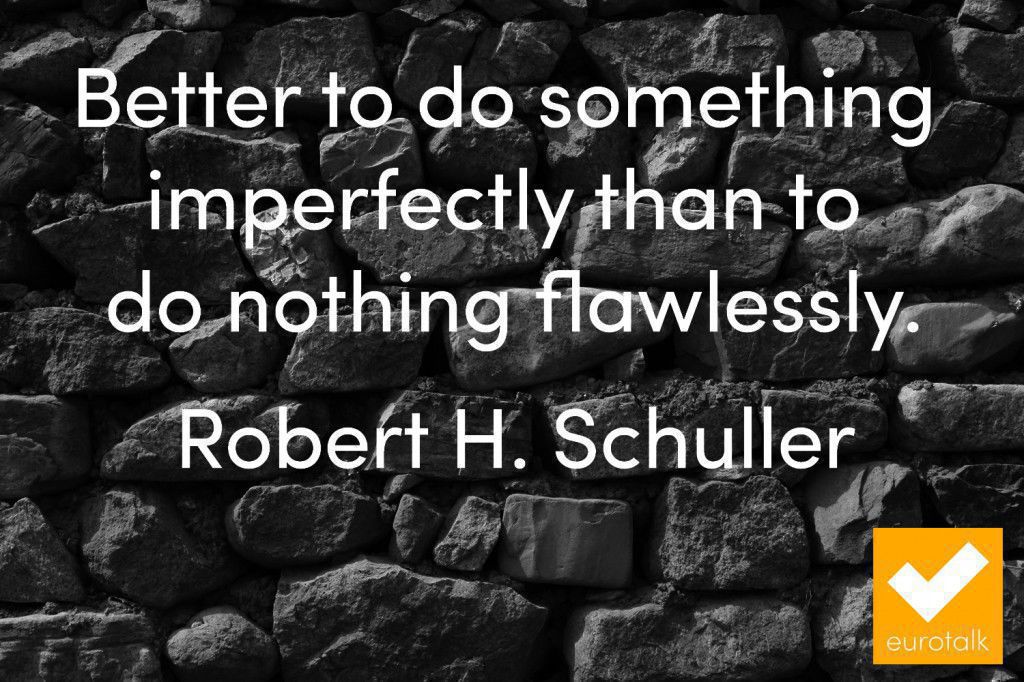Quiz: Which language should you learn?
Want to learn a language but not sure which one to go for? Try our new quiz for inspiration…
Did you get a good one? Tell us what you think in the comments, and don’t forget to share with your friends to see if they get the same!
And if you’re still a bit undecided, download our free uTalk app for iOS and try out 111 different languages, to see which one you like 😉
How do you make time to learn a language?
 We know what it’s like – you really want to learn a language, but things just keep getting in the way: work, school, commuting, exercise… There are so many things to fit into the average day, that it’s not always easy to make time for studying. But don’t despair – it can be done. Following up from last week’s tips on how to learn a language on a tight budget, this week we’re giving you some ideas about how to keep learning even when you’re short of time.
We know what it’s like – you really want to learn a language, but things just keep getting in the way: work, school, commuting, exercise… There are so many things to fit into the average day, that it’s not always easy to make time for studying. But don’t despair – it can be done. Following up from last week’s tips on how to learn a language on a tight budget, this week we’re giving you some ideas about how to keep learning even when you’re short of time.
Please share your own suggestions in the comments, and let us know which of these ideas works best for you.
1. Learn on your commute
This is my favourite strategy, as it uses time that I would otherwise spend staring out of a train window, or (now that I take the tube) at someone else’s armpit. Half an hour or so on a train or bus is the perfect time to read a book in another language, pull out your iPhone for a couple of uTalk games or listen to a podcast (there are loads designed specifically for learners). If you’re one of those healthy types who walks to work, try listening to the radio or a podcast on your phone.
2. Combine learning with socialising
Try to find a language partner who speaks the language you’re learning and chat to them over tea/beer/dinner. There are plenty of websites like totalingua.com and mylanguageexchange.com where you can find a partner to exchange languages with, either in person or over Skype/email. Or make some friends who speak that language and resolve to spend at least 15 minutes chatting to them in their language before you switch back to English.
3. Break it up into small chunks
There’s no reason why you have to spend hours at a time for it to be effective. In fact, 10 minutes a day of flicking through some vocab flash cards, playing a couple of revision games or doing a couple of units in a language app is probably more effective than one long session each week.
4. Fit the language into everyday life
Try switching your phone or Facebook into another language so you see it every day without changing your routine. (Disclaimer: Do not do this if the language is Arabic or Mandarin and you can’t read the script yet! You might have trouble switching it back… I speak from experience here.) Make post-its of everyday vocab and stick them around your house/office to learn the names of household items.
5. Use ‘dead time’ to practise a bit
If you added together all the time you spent each month just waiting around for things (waiting at the doctor/dentist, waiting for a bus, sitting on a delayed train…), you’d probably realise you were wasting hours of your time just getting bored. Keep a language book or app with you and you can always do a bit of reading or revision while you wait. You’ll be surprised how quickly it adds up!
6. Do things you were going to do anyway… in another language!
Surfing Facebook in your lunch break? Switch it into your language. Reading the news online? Find a foreign newspaper to read instead of your usual one. Watching your favourite TV show in the evening? Find it online dubbed or with subtitles. Found a new book to read? Get the translation (or, even better, the original foreign language book!). Ok you get the idea! Try thelanguagedojo.com for links to loads of cultural sites (TV/comics etc) in several different languages.
7. Learn while you’re doing other stuff
Put the radio on in another language or some language tapes or an audio-based lesson like EuroTalk Rhythms while you’re washing up/cleaning/getting dressed in the morning. You’ll pick something up without even realising you’re ‘studying’.
8. Set yourself a goal for the day
For example, say to yourself in the morning, ‘I want to spend x amount of time on vocab or grammar,’ or ‘I want to complete this many exercises/games,’ or ‘I want to have at least one conversation in the language today’. It’ll help focus your mind on what you need to get done, rather than just saying ‘I want to learn some French today’, which is a huge, daunting and extremely vague challenge, and one which you’ll probably go out of your way to avoid.
9. Chat online
If you don’t have time to go to the country, you don’t know anyone who’s from there and you can’t make time for lessons or meet-ups, you can probably still manage to spend a bit of time Skyping, chatting on a site like busuu.com or using another instant messenger. I’m also reliably informed that playing videogames is a good way to learn, as you can chat with other players from across the world while you play!
Good luck – and let us know how you get on…
Alex
10 reasons to visit… Kiev
A couple of months ago, I spent a few days in the Ukrainian city of Kiev, which turned out to be a fascinating and occasionally surprising place to visit. So here, in no particular order, are my top ten reasons to go and check it out for yourself.
1. It’s so cheap!
Probably one of the highlights of spending five days in Kiev was figuring out how much we’d just paid for each meal, trip etc… After eating a ridiculously large lunch at the fantastic Vagon, including drinks, appetisers and dessert, we realised it only cost £15 for two people. And even better, you can ride the Metro for about 10p (regardless of distance), take buses all over the city for 10p and ride the Funicular for about 20p. Taxis tend to charge you a flat, tourist rate of 100 hyrynas, which is still only around £5 to get from the airport to the city.
2. Chill out on the beach
Yep, there’s a beach. If you cross the bridge to the other side of the river, there’s a proper sandy beach where locals go to soak up the (surprisingly hot) sun. You can abseil from the top of the hill down to the beach, bungee jump from the bridge, swim in the river, or just sunbathe and eat ice creams that cost you less than 50p.

3. Crazy nightlife
Ukrainians seem to like to party, with lots of booze and dancing! Coyote Ugly is a favourite spot where you can smoke shisha, drink vodka shots, dance on the bar, and still come away with change from £20. However, be warned that if you ask for water in a British accent, you’re likely to come away with yet another (unwanted) shot of vodka! Apparently Arena City (quite central) is also worth a look with several different bars and outdoor seating areas.
4. Maidan square
Maidan is the city’s central square and home to some of the most recognisable statues and monuments. During our visit, it was also home to numerous barricades – many built from rubble, rubbish, tyres and whatever else was to hand. There were also many burned-out cars and even buildings which had been burned out by the police during the recent conflict. People had even pulled up the cobblestones from the ground and used them to throw during the riots. Here and in Khreschatik street you’ll also find lots of memorials to people who died during the revolution.
5. Take a trip to the world’s most famous nuclear disaster site
Admittedly this might not be on every tourist’s to-do list, but it certainly was on mine! You can take a day-trip to Chernobyl for around £100 per person, which includes an extremely well-organised bus trip to the town, lunch, fully-guided tour by really excellent guides and the amazing opportunity to take pictures by the reactor and in the deserted town of Pripyat, with its famous funfair, which was never opened to the citizens of the town before it was evacuated in 1986.

6. Brunch at Koritsa
I don’t know if this place is particularly famous, but it should be, for its awesome brunches with eggs, pancakes, cake and whatever else, plus juice and coffee for less than £15 for two people. Also try Vagon for its fantastic tagines, Varenichnaya for Ukrainian specialities (Vareniky are ravioli-esque dumplings) or Puzata Hata, which is a cafeteria-style chain that sells Ukrainian food by weight.
7. Take the Funicular up the hill
If you read Liz’s post a few months ago about her trip to Naples, you’ll remember she had a trip up the hill on the ‘funicolare’. Well this is pretty much the same thing… A carriage which takes you up the side of the hill for the eye-watering price of 20p. When you’re at the top, you can enjoy an amazing view of the city and river, as well as the park (albeit with very spiky grass) and one of the more surreal monuments – the archway representing friendship between Russia and Ukraine… The less said about that the better, maybe. Try a Kvas which is a really, really strange drink – something like a very sweet, non-alcoholic beer.
8. Beserabka market
This is a covered market just off Khreshatyk (the main street) and is a great place to wander around and see a range of really great quality fruit, caviar, salami, cheese and lard (which is strangely popular here…). Just be aware that the vendors will do the hard-sell on you even if you don’t speak Russian. We walked through with no intention of buying anything and came away with a jar of caviar and a block of cheese without even realising what was happening!
9. Pechersk Lavra
This landmark translates as something like the Monastery of the Caves, and is a particularly unique site, where you can spend at least a whole afternoon. It’s a complex of various different churches, as well as the crypts below where you can see the mummified bodies of saints by candlelight. The architecture here is particularly spectacular, with a myriad of golden domes, not to mention a great view of the city.
10. Sightseeing all the monuments around the city
There are loads of different statues and buildings around the city that are worth seeing. Climb the hill to see the St Andrew Church (and an amazing view), visit the St Sophia Cathedral (one of the Seven Wonders of Ukraine, apparently) and several other cathedrals, churches and more…
Don’t forget to download our free app, uTalk, and learn the basics in Russian or Ukrainian (or both!) before you leave – not many people in Kiev speak English, so you may find knowing a few words can make a huge difference.
And if anyone has any other tips or reasons to visit Kiev, please let us know in the comments!
Alex (with thanks to Gianfranco for the photos)
Quote of the week: 5 Jul 2014
“Better to do something imperfectly than to do nothing flawlessly.” Robert H. Schuller
For more like this, find us on Pinterest.
Embed This Image On Your Site (copy code below):
How to learn a language on a budget
Why do people give up on learning a language?
There are many answers to this question, of course. Recently, we’ve been running a survey (which you can still complete, if you have two minutes), about language learning, reasons for learning and things that might get in the way. According to the results so far, two of the top answers given to the above question are: lack of time, and lack of money.
 As I know only too well, language classes, private tutors and language CDs or books can quickly become very expensive. Having recently decided to try and upgrade my schoolgirl French, I had a look round at languge tuition and was pretty depressed to see that I would struggle to afford even a few weeks of classes. But never fear, there are plenty of ways to learn even if you can’t afford to go back to school or buy expensive subscriptions.
As I know only too well, language classes, private tutors and language CDs or books can quickly become very expensive. Having recently decided to try and upgrade my schoolgirl French, I had a look round at languge tuition and was pretty depressed to see that I would struggle to afford even a few weeks of classes. But never fear, there are plenty of ways to learn even if you can’t afford to go back to school or buy expensive subscriptions.
So here’s my short guide to how you can learn a language on a budget. Happy learning!
1. Online
There are a tonne of great resources to be found online without even paying a penny. Depending on your language, there are loads of websites for learning grammar, vocab and more. And you can often find really good sites for more advanced learners – I really love RFI for practising French (they have news reports in ‘easy’ French, with text transcriptions). For beginner to intermediate learners, busuu.com has a great programme for 12 languages, including grammar, reading, writing and vocab, and even allows you to chat with native speakers.
2. Media
This probably only applies to intermediate to advanced learners, but it’s my favourite way to practise the languages I already speak. Try watching movies in your language, with English subtitles, or subtitles in the language. Or Google the online version of a newspaper in that language (if I’m feeling very motivated, I read lemonde.fr, spiegel.de or elmundo.es). The radio is also a great tool for language absorption. You can listen to radio in almost any language at tunein.com (and they have a great app for on-the-go listening). Even just listening to some music in another language gets you used to the sound.
3. Flashcards
I used to be obsessed with these when I was at school and uni. In my opinion, this is a great way to cram vocabulary. Either make your own with paper (write the foreign word on one side and the English word or a picture on the other) and test yourself or get a friend to test you. Or, even better, there are some free programs to do just that, which even remember which words you’re weaker on and bring them up more often until you get them right. I used to use this on the computer, but you can get flashcards in app form now too.
4. Find other people to speak to
Ok, I’ve got it easy here because we have a very international office and I’m never short of someone to annoy with my dodgy Spanish… But even if you’re not surrounded by native speakers, you might be able to track down a language partner using a website like totalingua.com that matches you up with an exchange partner. If no one lives in your area, you can always arrange a Skype chat instead of meeting face to face.
5. Apps
There are some amazing free or cheap apps to download on iPhone or Android. I’m using a combination of DuoLingo and uTalk to learn basic Italian. DuoLingo is free and gives you a good grounding in grammar and basic vocab, whilst uTalk features native speakers for all (70 and counting) languages, and has real audio for all the phrases and vocabulary, so I can pick up on the accent and pronounciation as well. I normally play a couple of the games on the bus to work, although I save the recording quizzes for the privacy of my room!
6. Books
If you’re more of a paper and pencil type, then there are plenty of language-learning books on the market, and they’re mostly cheap to buy, or you can track some down second hand. I think there’s something to be said for having a paper dictionary if you’re a serious language learner (what if leo.de is down!?) – even if you just decorate your shelves with them to look intellectual (or is that just me?).
Have you got any more tips for people learning a language on a budget?
Alex
Next week: our guide to learning a language when you’re short of time. If you’ve got any particularly useful tips you’d like to see included, please let us know below!


